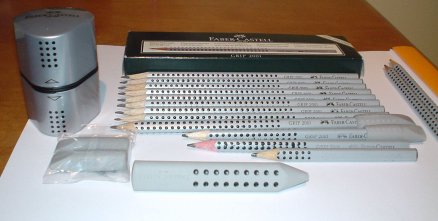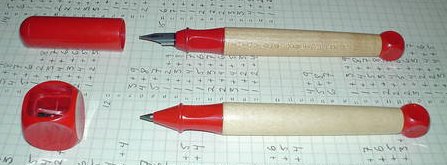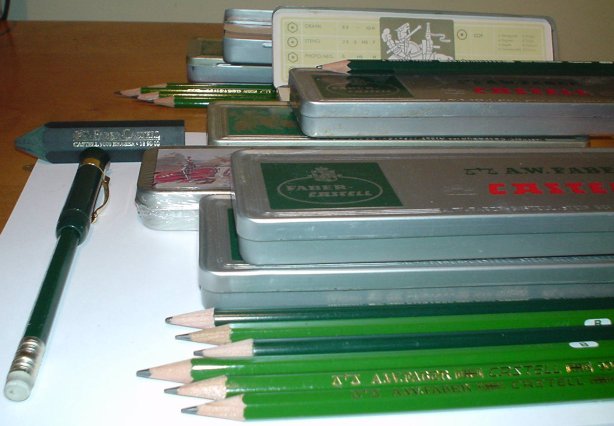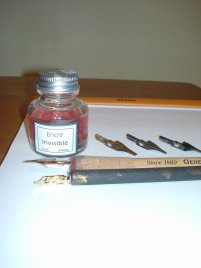
At a time when it wasn’t believed there was anything more to add to the common pencil, came a tour de force from the world’s oldest and most important pencil manufacturer. This stunning triangular shaped silver coloured pencil with raised black dots on the sides immediately became an icon of industrial design, winning numerous international awards and being named the Business Week’s “Product of the Year”. A pencil? Yes, a bold new pencil that stepped forward with innovative new features and a look that placed it in the realm of high end writing instruments and fashion.
A marketing campaign that placed the pencil in art stores, quality stationers, and fountain pen shops accompanied by attractive merchandising was the essential companion in gaining attention. Arts sponsorship and pencil themed fashion shows were among the noteworthy campaigns.
Making almost two billion pencils a year, Faber-Castell is the world’s largest pencil company. Their pencils were the world’s first branded writing instruments, and their corporate origins are in the eighteenth century. It seems they haven’t reached these heights by resting on past accomplishments. The UFO eraser and sharpener, the perfect pencil – each of these would be an incredible achievement on it’s own. But Faber-Castell keeps pushing the boundaries of the what a pencil can be. The potential position in the public consciousness is elevated by each new addition. Even a new eraser wins design awards. Nothing is ordinary about their creations.
The pencils are simply beautiful. They are both functional and attractive. The triangular shape fits the hand nicely, and the black dots do assist with “grip”. (Unfortunately, in high humidity, they do get a bit tacky, and can stick to other objects.) There are nice hidden touches – the head of the eraser-less pencil is black, with the shade corresponding to the hardness of the graphite. Of course, they’re also labelled on the side.
It’s the sort of pencil that gets the attention of people who don’t like pencils, and the renewed devotion of those who already have them at their desk. Of course, those who like the ordinariness (and price) of the office supply store dull yellow pencil, perhaps as a badge of honour, won’t want this upscale version.
There is a matching triangular eraser (also produced in at least red and blue) available, or matched eraser caps, sold in pairs. Of course the pencil looks so nice that a stylish UFO eraser seems made for it.
They come in five hardnesses, 2H, H, HB, B, 2B, and so are meant more for writing rather than drawing. I’ve used them for about four years, and some leads are better than others – the odd one seems a bit scratchy, or breaks in such a way that there are two pencil lines. That can be a bit annoying, but is luckily not the norm. I also notice that the pencil’s halves are sometimes a bit mismatched in colour. This isn’t a serious problem – in fact I believe the pencil’s amazing looks highlight the little imperfections.
Can Faber-Castell top this pencil? I don’t see how, but I’ll keep watching.



 The pencil is comfortable and writes very nicely. The lead is solid and doesn’t break. Though they ship with an HB lead by default, the pencils also take other hardnesses as well as colour leads from art supply stores.
The pencil is comfortable and writes very nicely. The lead is solid and doesn’t break. Though they ship with an HB lead by default, the pencils also take other hardnesses as well as colour leads from art supply stores. 


